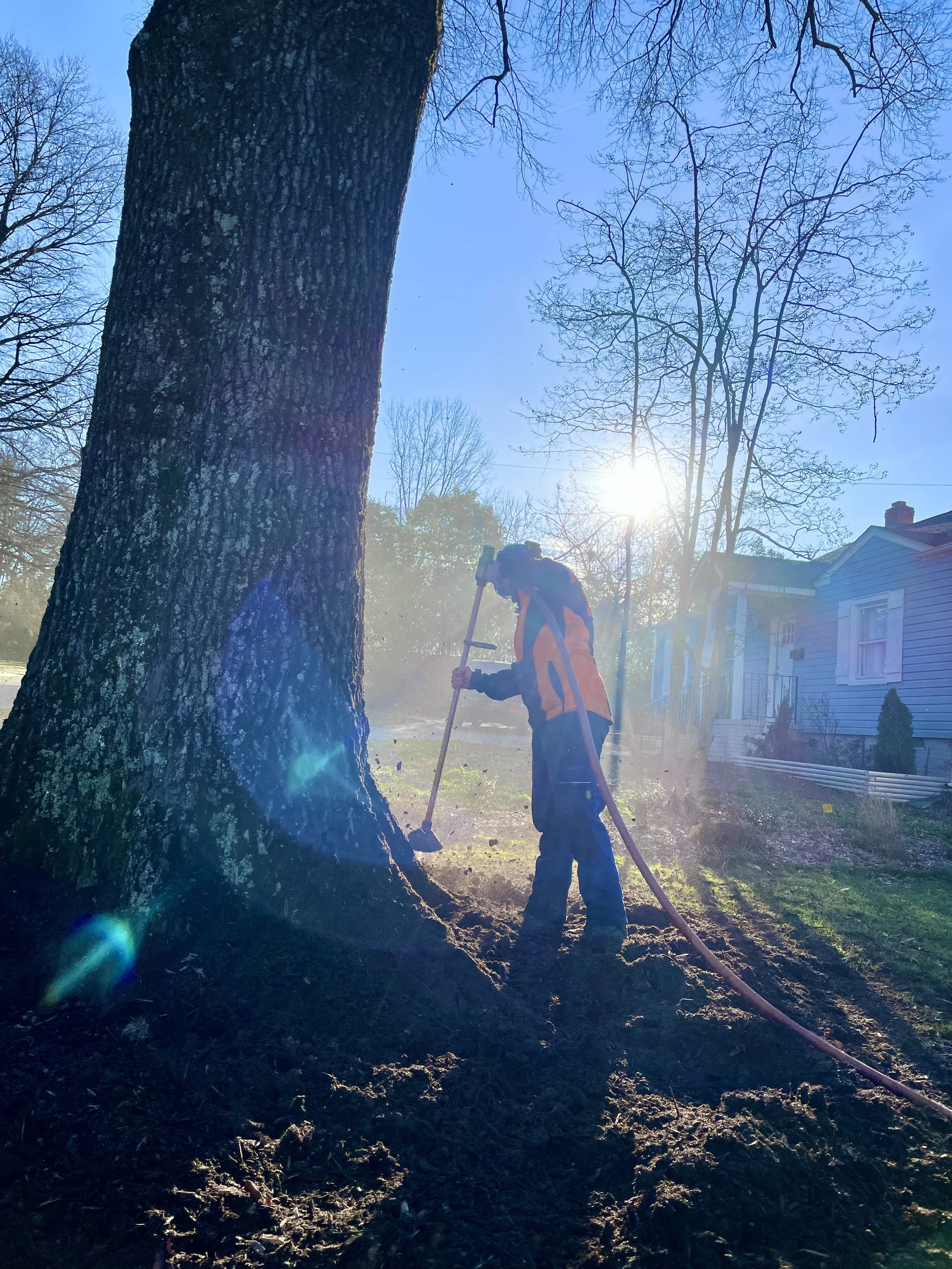Soil. Home To The Foundation Of The Tree.
There’s an old adage about the strength of a house built on rock versus sand. The house on rock survives, but the house built on sand washes away. Despite neither option being best for them trees are incredible survivors and can be found growing on both. The best option though is a mixed soil with regularly replenished nutrients.
The parts of trees that we most often see are above the ground and so it makes sense that we often think of addressing those parts of the tree first. The part of the tree that plays the most important role in keeping the tree healthy and standing upright however is below the ground. The root system of the tree provides structural integrity to keep the tree upright (in our area these root systems can easily support more than 60,000 pounds of trunk and canopy) and also is where the tree gets the water and nutrients that are needed to keep it alive.
In a natural setting, like a forest, trees often enjoy a soft (de-compacted) soil mix that is regularly replenished with nutrients from fallen leaves, branches, and other trees that let the roots easily spread out and find lots of nutrients and water. In urban settings, trees often have an uphill battle of compacted soil from human activity (traffic, construction, and even planting grass all compact soil making it a struggle for roots to grow) and limited nutrients due to other vegetation (grass, plants, shrubs) getting first changes to absorb what is available and nutrient providing materials (leaves, dead limbs, fallen trees) being removed.
Trees are incredibly resilient and adaptive so they often meet the challenge of growing in these less than ideal conditions without supportive intervention. However, in highly cultivated areas like homesites and commercial properties where the challenges for a tree may be stacked together and the consequences of a tree not surviving can be really high, it is necessary to support the tree through soil amending activities.
Slow-release organic fertilizer is injected into the soil below where grass and other vegetation can reach, properly installed mulch rings to protect and feed the most crucial roots of the tree, and soil de-compaction processes like radial trenching and vertical mulching can do a tremendous amount (especially when done as part of an ongoing maintenance plan) to reduce the challenges our favorite trees face in staying healthy and upright.
Blasting away accumulated soil from the base of the tree will help the tree “breathe” better as well as prevent excess moisture from leading to decay in the buttress roots. “If it has bark you don’t want mulch or soil touching it”
The expansive root system of this mature Willow Oak is seen after radial trenching blasted away the soil. Filling this trench back with compost will maintain the de-compacted soil and provide nutrients for an extended period.


